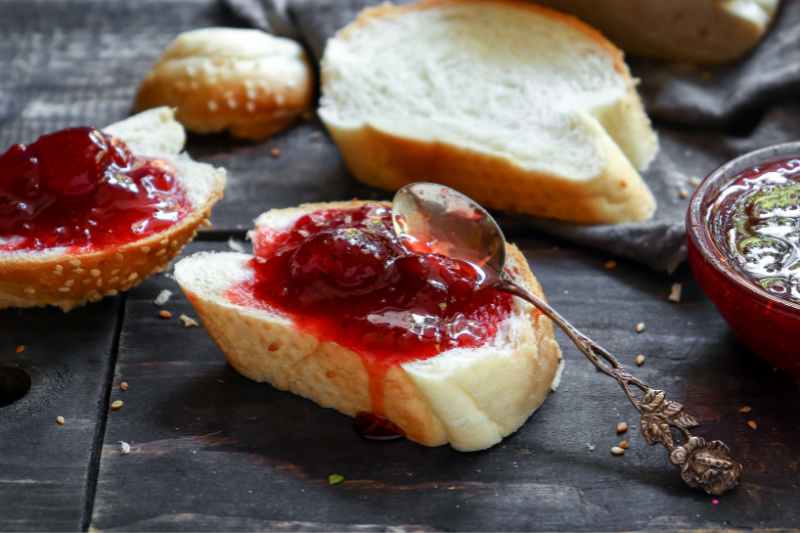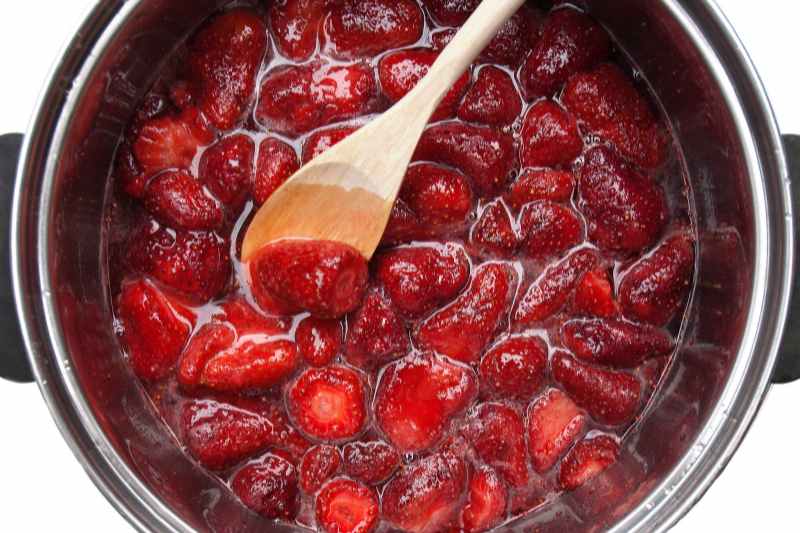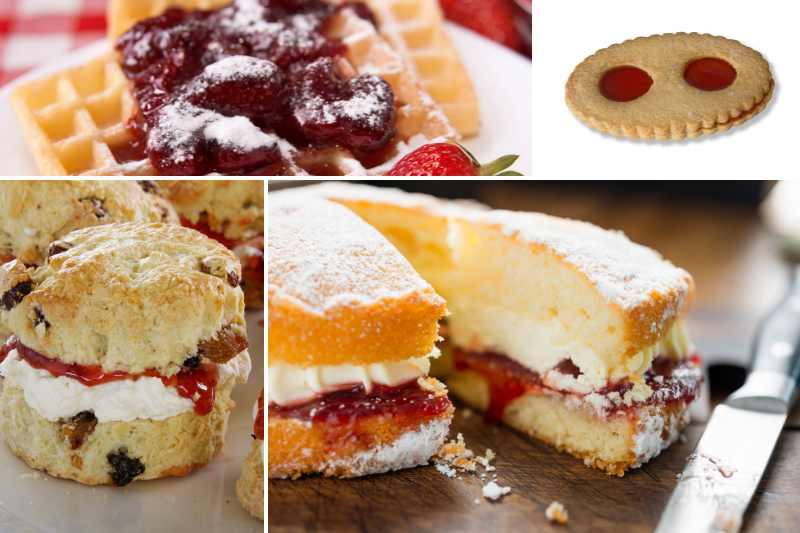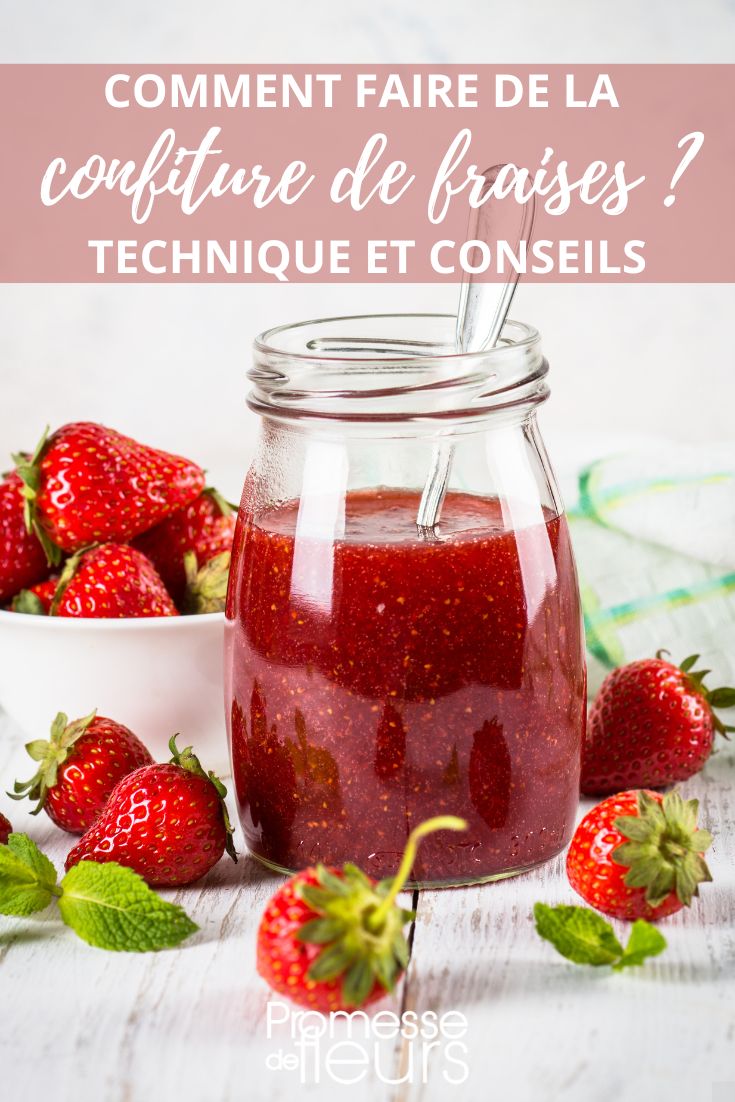Strawberry jam is the favourite jam of French people, unchallenged on breakfast tables in millions of households for years. To restore its former glory, commercial jam not always being of best quality and sometimes even laden with pesticidal residues, how about making it at home? The result may even change minds of those who find this jam too ordinary.
Here is our granny's recipe, rich in fruit, so no need to feel guilty about piling it on toast!
Which strawberries for jam?
All strawberries are suitable for making a proper jam. Ideally mix strawberries of different varieties, provided they are free from pesticidal residues. Also select for jam fruits that will not increase in size or those that are misshapen, but never damaged fruits.
Large-fruited strawberries are often preferred for jam, such as Bogota, Belrubi, Elsanta or Mamie (non-perpetual), or among perpetual varieties, Ostara and Rabunda, which are also very productive.

When and how to harvest your strawberries?
Perpetual strawberry plants allow harvesting between May and October, while non-perpetual strawberry plants will fruit intensively for about a month between May and June.
Select fully ripe fruits, they guarantee jam with a beautiful texture (reserve red but still slightly firm fruits for a nice strawberry salad or for decorating a cake, for example). Prefer a morning pick before hottest hours in high summer, and never after rain.
For these particularly fragile fruits, harvest in small quantities: strawberries do not tolerate long cooking well. It is therefore better to do several small batches of jam than one very large quantity at once. From 1 kg strawberries you can make four 350 g jars.
My strawberry jam recipe
There are countless strawberry jam recipes, almost one per family, so to speak! This one favours all of fruit's aroma with the amount of sugar needed for ideal preservation.
Ingredients
1.05 kg strawberries
700 g granulated sugar
1 lemon (juice and pips)
- Quickly rinse your freshly picked strawberries under water, hull them and dry on absorbent paper. You obtain 1 kg strawberries. Cut largest strawberries in half.
- Scald your jam jars and their lids and let them dry on a clean tea towel.
- Put the strawberries in a large heavy-based saucepan (this detail is important for these heat-sensitive fruits).
- Add the sugar and lemon juice.
- Cook over low heat until sugar has completely dissolved.
- Crush the fruit with the back of a skimmer.
- Cook until first boil, remove from heat and leave to rest overnight, covered with clingfilm or a lid.
- Next day, add the lemon pips enclosed in a food muslin, and bring to the boil again gently for a maximum of 15 minutes, stirring constantly and skimming if necessary.
- Check the cooking: jam should coat the spoon and set on a cold plate.
- If you prefer a finer texture, give the mixture a quick blitz with a blender.
- Fill jars immediately using a small ladle or jam funnel and close immediately, turning jars upside down to create a vacuum and ensure perfect sterilisation.
- Let cool completely and label with attractive labels showing date of manufacture.
- Store in a dark place (cupboard, larder). With this sugar ratio jam keeps for two years unopened, then in refrigerator after opening.
Gwenaëlle's tips: two-stage cooking gives a good texture despite short overall cooking time. Keep lemon pips well, they will also help set the jam, strawberries having very low pectin content. You can also macerate the fruit with the lemon overnight, and prefer brown sugar to refined white sugar (but typical bright red colour of this jam will be less vivid). Strawberry jam should not be overcooked, so it is important to respect this sugar quantity, otherwise shelf life will be reduced.

Variations
Beyond classic strawberry jam, one can explore bolder, equally indulgent recipes!
The strawberry and rhubarb duo is a classic in pâtisserie, and also in jams.
If you can gather wild strawberries (perhaps they grow in a shady area of your garden), these make an exquisitely subtle pairing with garden strawberries.
You can also experiment by adding herbs, red fruits, citrus trees and even spices to strawberry: strawberry basil, strawberry peppermint, strawberry-raspberry, strawberry-vanilla, strawberry Sichuan pepper, strawberry and orange juice, strawberry and lemon, among others...
How to use strawberry jam?
Strawberry jam is the one that traditionally sits between two shortbread rounds of lunettes de Romans, those little biscuits of my childhood, still found in some bakeries (more easily south of the Loire)…
It is THE jam that accompanies scones at the English cream tea, the sweet break that our British friends have elevated to the status of a national institution. The Victoria sponge cake is another classic of English desserts, a kind of sponge alternating layers of cake, strawberry jam and whipped cream.
At home, we like it to fill winter doughnuts, in strawberry jam rolls, in jam tartlets, but also more simply in pancakes and on waffles, or to flavour natural yoghurt, and of course on toast.

Want to know more about growing strawberries?
See our articles: Growing strawberries on the balcony, Choosing strawberry plants, to grow strawberry plants, and how to protect strawberry harvests?































Comments